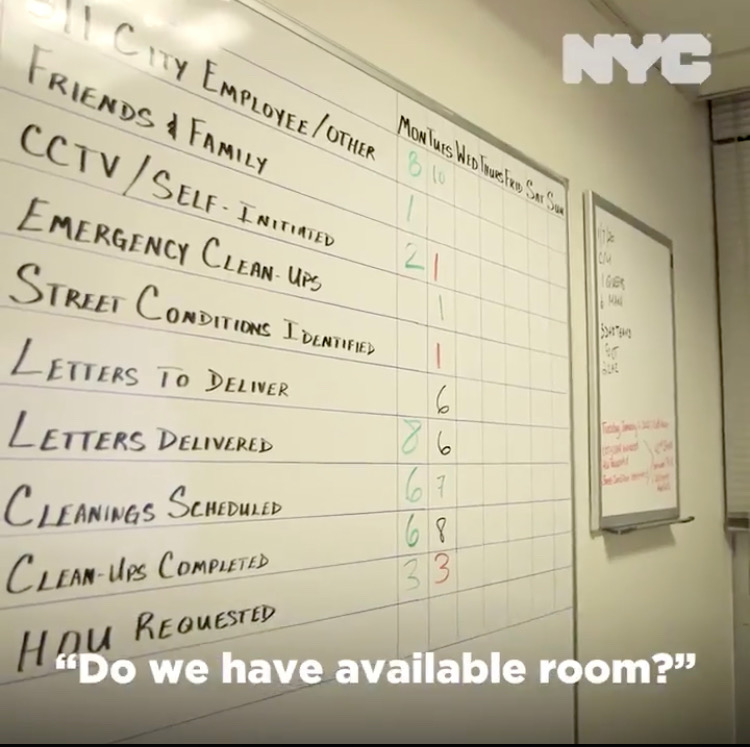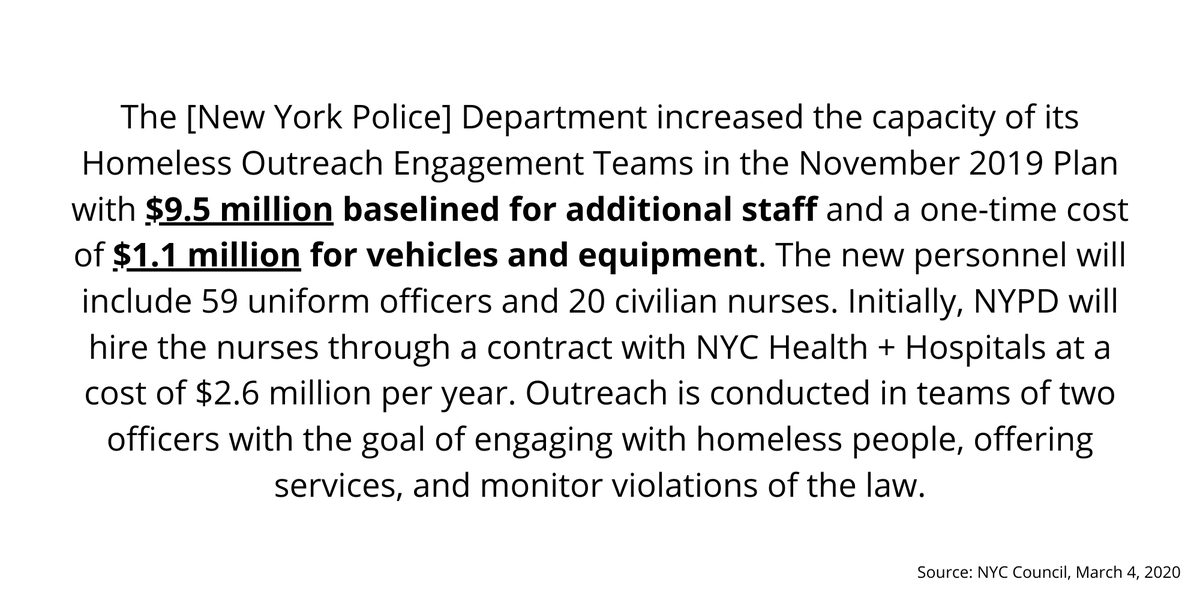
Today, we are releasing a new white paper on the “sightings” process, the process unsheltered homeless New Yorkers must work through in order to “prove” their homelessness and secure vital outreach case management services.
THREAD [1/x]:
wnyc.org/story/new-repo… @WNYC @jamifloyd
THREAD [1/x]:
wnyc.org/story/new-repo… @WNYC @jamifloyd
The people we talk to constantly share a version of what you’ll hear in the video, that they have to be “sighted” X # of times:
(Note: NYers have a right to shelter, but many opt against it for legitimate reasons. The "sightings" are not for shelters).
(Note: NYers have a right to shelter, but many opt against it for legitimate reasons. The "sightings" are not for shelters).
https://twitter.com/i/status/1091082170817564672
As we continued to hear this narrative, we brought our concerns to @NYCDHS. We told them the “sightings” process was a barrier for unsheltered NYers and that we wanted to explore how this process could be simplified. They told us that an official “sightings” policy didn't exist.
Even if a @NYCDHS policy doesn't exist, homeless NYers experiences are real.
We teamed up with two homeless NYers, Charmian & Peter, to conduct surveys & co-author a white paper to provide documented evidence of the "sightings" process.
Read it here: sightings.human.nyc
We teamed up with two homeless NYers, Charmian & Peter, to conduct surveys & co-author a white paper to provide documented evidence of the "sightings" process.
Read it here: sightings.human.nyc
We surveyed 41 homeless NYers all across Manhattan and Brooklyn to better understand their experiences about the “sightings” process. We also conducted one-on-one interviews with six participants, to ask some in-depth questions.
We began our survey with the question: “Have you ever heard of a process where you need to be seen and documented a certain number of times by the outreach teams?”
Despite @NYCDHS saying there is no “sightings” policy, 78% (n=32) people we surveyed knew of it right away.
Despite @NYCDHS saying there is no “sightings” policy, 78% (n=32) people we surveyed knew of it right away.

For those who said, “Yes,” we then asked, “How many times were you told you need to be seen?”
The answers we received varied wildly, ranging from 2-12. Six was the most common answer.
One person said, “Every day for a year.” Some didn't have a number, but said, "A few times."
The answers we received varied wildly, ranging from 2-12. Six was the most common answer.
One person said, “Every day for a year.” Some didn't have a number, but said, "A few times."

We asked our co-authors to help us understand the discrepancies. They attributed the confusion to three primary reasons:
1) Different outreach teams often have different protocols
2) Outreach teams are not upfront about how this process works
3) High outreach worker turnover
1) Different outreach teams often have different protocols
2) Outreach teams are not upfront about how this process works
3) High outreach worker turnover

Of those three reasons, they highlighted the varying protocols as the most pressing.
The confusion caused by this variance in protocols is exacerbated by the fact that survey participants had encountered an average of 2.83 different outreach teams in the past three years.
The confusion caused by this variance in protocols is exacerbated by the fact that survey participants had encountered an average of 2.83 different outreach teams in the past three years.

Despite us conducting all of our interviews above ground, over 80% of participants reported encountering BRC - the outreach team contracted to provide outreach services in the subways and major transit hubs - in the last 3 years.
Simply put: People move around. It's inevitable.
Simply put: People move around. It's inevitable.

By not providing its six different outreach providers with a uniform “sightings” process, @NYCDHS has caused a massive headache for street homeless New Yorkers and for outreach teams who are working 24/7 to try to connect people to scarce services. 

Most concerning: Only 11 of the 41 people we interviewed actually have an outreach case manager.
The “sightings” process is not working if 75% of people we interviewed don’t have case managers, yet the majority of people we interviewed have been on the streets for 1+ years.
The “sightings” process is not working if 75% of people we interviewed don’t have case managers, yet the majority of people we interviewed have been on the streets for 1+ years.

Unsheltered homeless New Yorkers need access to outreach case managers ASAP.
Without outreach case managers, people will likely not be added to the waitlist for safe havens, and in many cases, will not have alternative routes for applying to permanent housing.
Without outreach case managers, people will likely not be added to the waitlist for safe havens, and in many cases, will not have alternative routes for applying to permanent housing.
The “sightings” process is another way in which @NYCDHS have become gatekeepers to housing.
In December, outreach workers also highlighted the need for more housing, saying, "Nothing we do matters without new housing.":
gothamist.com/news/homeless-… @Gothamist
In December, outreach workers also highlighted the need for more housing, saying, "Nothing we do matters without new housing.":
gothamist.com/news/homeless-… @Gothamist
Demand for housing greatly exceeds supply, case managers are underpaid, #OutreachNYC is increasing 311 call volume, and NYPD's involvement is making outreach harder.
These factors - and more - have left outreach teams in the difficult position of rationing case managers.
These factors - and more - have left outreach teams in the difficult position of rationing case managers.
Recognizing all these barriers, we're calling on @NYCDHS to address the "sightings" process once and for all.
Everyone who is living on the streets and subways and who wants an outreach case manager should be able to get one from their outreach team.
Everyone who is living on the streets and subways and who wants an outreach case manager should be able to get one from their outreach team.
Meanwhile, there must be a recognized, uniform “sightings” process across all outreach teams and other stakeholders who engage and assist street homeless individuals. This means explicitly stating the number of “sightings” in the outreach contracts, with consistency across teams.
We want an end to the secrecy of the “sightings” process. @NYCDHS should explore the idea of developing & distributing a sheet with street-to-home information on it, and alternative pathways to housing (shelter, drop-in center). It should clearly explain the “sightings” process.
For far too long, the “sightings” process has flown under the radar, oftentimes leading to delay in services for those who want them.
Our team worked with those directly affected to produce our recommendations. We hope you read them through: sightings.human.nyc
/end
Our team worked with those directly affected to produce our recommendations. We hope you read them through: sightings.human.nyc
/end
@WNYC @jamifloyd @threadreaderapp unroll
• • •
Missing some Tweet in this thread? You can try to
force a refresh






